How to Host Your Own Outdoor Wine Tasting
Spring is coming, and with it comes the desire to get together with friends or family in the great outdoors. On your patio, deck, or even around the firepit, you can set the scene for an evening of great memories by merely hosting an outdoor wine tasting. First, let’s consider these tips on how to host a wine tasting party.
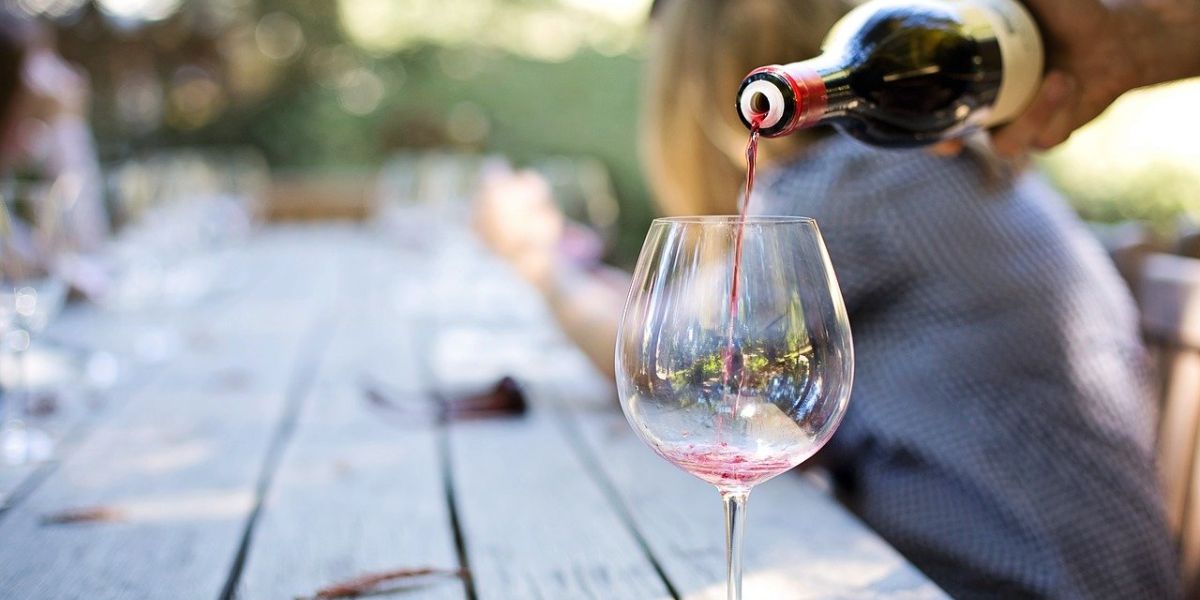
Set the Scene
Creating a bit of ambience can certainly help establish the right mood for a wine tasting with friends. Outdoor wine tasting may require a bit of extra ingenuity. For an evening gathering, consider stringing white lights, make sure there is plenty of comfortable seating, and consider a small propane fireplace or bonfire if there is a chill in the air. For a daytime tasting, be sure to offer shade from the sun and make seating maneuverable so that people can move from sunny to shaded locations. Also, be sure to have bottled water or non-alcoholic beverages on hand for those who want to take a break from the wine.
Select a Wine Theme
There are so many wine varieties that it is good to have a theme for your tasting. This could mean that you try only budget-friendly wines. It could mean that you select only white wine and crisp wines on a warm summer’s day, or it could be varied based on the location of production.
Be Careful with Your Guest List
Big gatherings are undoubtedly fun, but intimate parties are generally better when it comes to tips on how to host a wine tasting party. You want your tasting to include easy conversation, which flows typically best among small crowds. Also, pouring is easier to manage when there are fewer cups to fill. A single bottle of wine will generally fill 12 taster cups. Therefore, you may want to limit your headcount to 12.
Make Sure to be Well-Supplied
Obviously, it will be essential to have the appropriate number of bottles on hand and the 2-ounce tasting cups. Additionally, though, you’ll want to have spit buckets for guests who fear getting too tipsy. Palate cleansers, such as bread or crackers, are a welcomed addition to outdoor wine tasting, and notepads with pens are great for those who want to remember which wines they prefer. Finally, choose snacks or a small meal that pairs well with the wines being offered.
Wine and Food Pairings for Outdoor Gatherings
Spending time outdoors with friends and family can be truly refreshing and can provide the perfect release for life’s stresses. Make that experience even better by bringing along a bottle or two of wine. Sipping wine, a product of nature just feels right when seated on a picnic blanket, in a patio chair, or around the bonfire. Forget the fancy stems and the easily-shattered crystal. Wine pairing for outdoors begins with an unbreakable tumbler or a simple plastic cup, and it finishes with sips of fantastic flavor paired with memorable conversation.
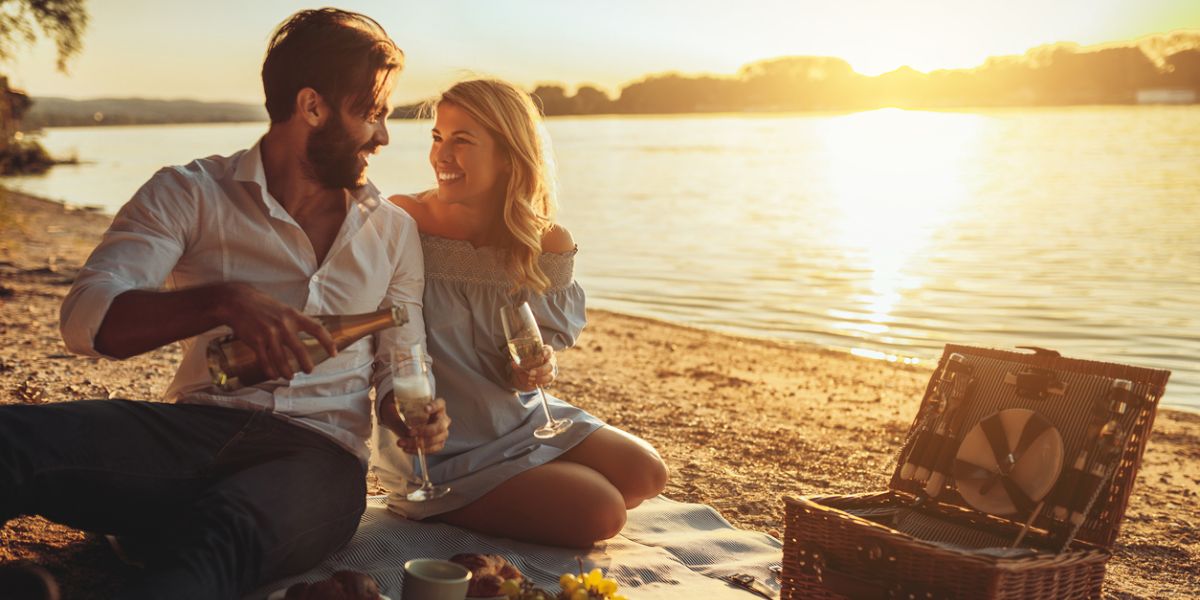
Outdoor-Friendly Foods With Wine
In truth, in the right setting, nearly any food can be made outdoor-friendly, but choosing those that are easy to serve and to clean up is generally best when wine pairing for outdoors. Bite-sized finger foods are the easiest. Dress up traditional sandwiches with artisan bread, flavorful spreads, and colorful vegetable toppers. The outcome is delectable for the eyes and the palate.
Choose a Variety
The beauty of sandwiches is that they are relatively simple to prepare and can be made to reflect a wide array of flavors. That means you open the door to several different wine and food pairings. Make this not just a fun meal but also a sort of wine tasting. With heartier meats, such as roast beef, you’ll want to select a full-bodied wine—Bordeaux, Shiraz, or Cabernet Sauvignon, for instance. For poultry sandwiches, a medium-body is better, such as Chardonnay, Pinot Noir, or Sauvignon Blanc. Fish sandwiches call for a light to medium-body, like Riesling, Pinot Grigio, or Sangiovese. If you really want to keep it simple, you might even opt for sandwiches with various kinds of nut butter. With peanut butter or cashew butter, choose a sweeter wine, such as Moscato, Zinfandel, or a sweet Riesling.
Stay Supplied
In addition to making sure you have enough food and wine, you’ll also want to make sure you have napkins or wet naps to avoid sticky, bug-inviting situations. You should also have bottled water, small single-use plates, and perhaps even notepads with pens on hand (It is convenient to keep track of what you like and what you don’t).
Hiking and Wine Tasting
There are so many beautiful hiking trails in this country. Whether you like the easy, winding paths along the lakeside, or you push yourself to reach great peaks, the activity is beautifully paired with a simple and quaint wine tasting. Hiking and wine tasting can pair to create a day with friends that will be remembered for years to come.
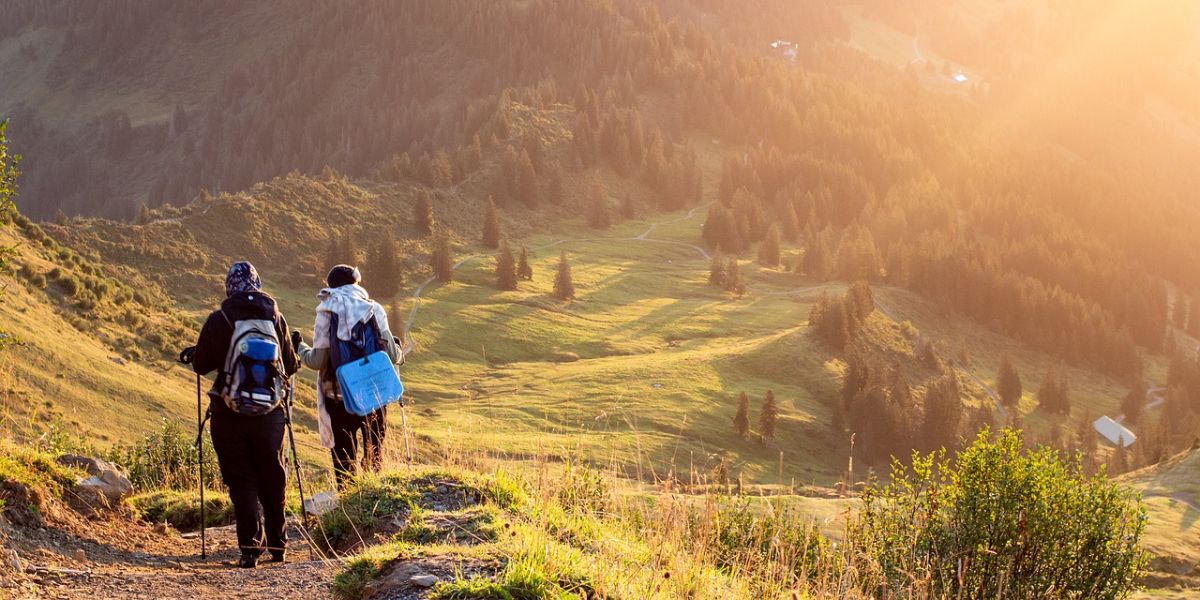
Hiking Through Wine Country
The beauty of American wine gaining traction among connoisseurs is that it has led to an expansion of “wine country.” There are thousands of vineyards in America now. In Virginia alone, there are more than 200, and they create the perfect backdrop for a beautiful and potentially romantic hike. Several wineries source their wines from vineyards located near or along the Appalachian Trail. Sky Meadow State Park, for instance, offers excellent hiking opportunities with beautiful views of far-off mountain peaks. You can bring your own bottles of wine for tasting, perhaps some semi-sweet, refreshing varieties to taste in the park, or you can make a short trek to the local wineries to be served.
Challenge Yourself with a Multi-Day Hike
You can find Rogue River in Oregon, where adventure packages include a guided four-day hike of intermediate difficulty. Take a break during the trek to float on the rafts packed by your hike leaders and enjoy a wine tasting on the water. Some of the hiking packages include a wine-tasting component with a good mix of varieties, including Riesling, cabernet sauvignon, merlot, Rosé, and more classics. In this case, hiking and wine tasting are often referred to as ‘wiking.’
Mountains and Wine
In the Adirondacks of Upstate New York and Colorado’s Rockies, you can find examples of mountain treks in close proximity to wineries. This is true hiking through wine country. Some guided tours provide bottles for tasting along the way, or you can grab yourself a trail map and pack your own wine tasting picnic. Either way, you are certain to get some exercise, exposure to breathtaking views, and a literal taste of the area.
Top 5 red Bordeaux Wine Blends
Bordeaux is an iconic wine growing region, the largest in France. Located in the southwest of the country, it produces everything from table wine to the most expensive, sought-after bottles in the world. Red Bordeaux wine blends are carefully and lovingly crafted from different grapes, each of which has its own unique qualities and characteristics. Let’s sip on some knowledge of these fantastic wines.
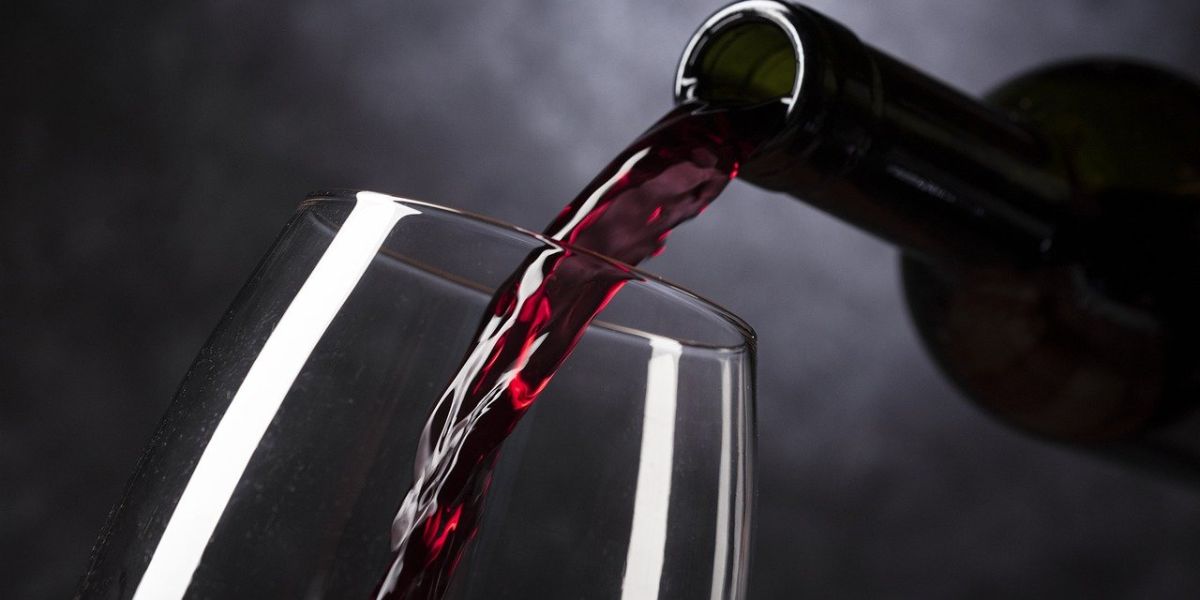
Red Bordeaux Wine Blends
Which grapes are used in a quality Bordeaux wine blend?
Cabernet Sauvignon. This grape is high in tannins and can age forever! It is deep, full-bodied, and highly structured. When mature, it is also quite subtle and you will notice more nuanced aromas. In its youth, Cabernet Sauvignon is fresh and forward with black fruit flavors and aromas.
Merlot. Known for being softer, Merlot can help balance out the more austere Cabernet Sauvignon.
Cabernet Franc. While Cabernet Franc is a forebear of Cabernet Sauvignon, it is lighter. In a Bordeaux blend, it is more fruit-forward, herbaceous, and crisp.
Petit Verdot. While not a major component of red Bordeaux wine blends, Petit Verdot deepens the color and delivers a fine and unexpected spicy appeal.
Malbec. Used more in Argentina and other wine regions, this is fruity and deep.
Carmenère. Again, this is a more prominent choice in regions like Chile as it is all but extinct in Bordeaux. However, it makes a full-bodied impact.
Best New World Bordeaux Blends
Red Bordeaux wine blends break geographical barriers. Going beyond France, here are five of the best new world Bordeaux blends.
Argentina’s Bordeaux blends favor Cabernet Sauvignon and Malbec. Try Catena Zapata Nicholas Red from the Mendoza Region to experience a new world of taste and intrigue.
Australia boasts a thriving wine growing culture; it’s hot temperatures make it a natural for Shiraz, but its Bordeaux blends are also engaging. Try Woodlands’ Margaret River “Margeret Reserve.”
Chili is the starting point for many of the world’s top Bordeaux blends, and they are heavily influenced by French techniques. Try Errázuriz, Don Maximiano Founder’s Reserve.
South Africa has been producing wine for centuries but is considered “new world.” The climate and geography lends itself very well to Bordeaux blends. Try Raats MR Mvemve de Compostela from Raats Family Wines.
Washington, US, is an up and coming wine region, and thanks to its unique terrain and climate, it produces stunningly dynamic wines. Try Thick Skinned Red Mountain.
Treat yourself to a world tour of the best red Bordeaux wine blends. The best place to start is in your own backyard! Try local wines that capture the magic of Bordeaux and add their own unique flair and flavor.
Red Mountain AVA: What to Know
Three and a half hours from Seattle, you will find one of Washington’s hidden treasures. Stretching out over 4040 acres, the Red Mountain AVA is the smallest wine grape-growing area in the state. Its warm climate, gentle south slope, and diverse geological profile allows it to produce some of the most exquisite red wine grapes in the region. Cabernet Sauvignon, Syrah, and Merlot grown here are renowned for their depth and concentration, winning critical acclaim - and, more importantly, wowing at tables all over the country.
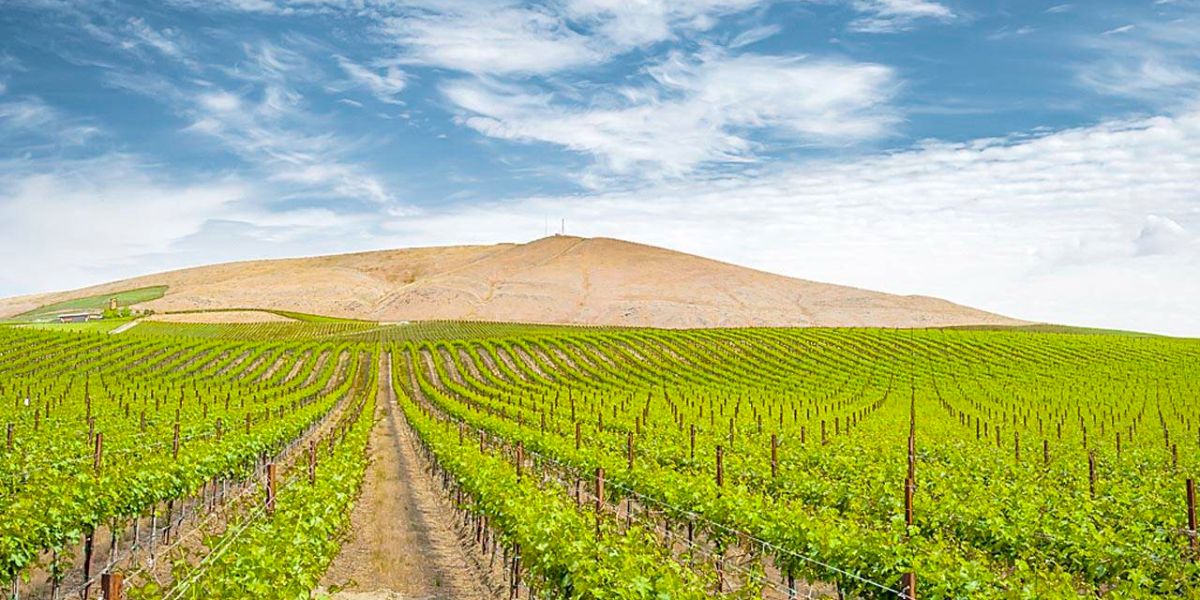
Welcome to the Red Mountain Wine Region
What makes the Red Mountain AVA unique among wine-growing regions?
Geography. We can thank the Ice Age some 10,000 years ago for making the Red Mountain AVA what it is today. Repeated flooding transformed the landscape. Harsh peaks were molded into soft mountain slopes, and this enabled rich top soils to be distributed over the land. This soil features high alkalinity and calcium carbonate, which enables vines to establish strong root styles for optimal nutrient absorption.
Slope. Washington isn’t always renowned for its sunlight. However, the southwest slope here grants longer sun exposure and more warmth. The tannins that are so prized in Red Mountain grapes are a direct result of these conditions.
Ideal Rainfall. Red Mountain has a desert-like climate with rainfall averaging just 7 inches a year. During the growing season, there is almost no precipitation. This is great for grapes. Using drip irrigation, growers can properly manage their vineyards without undue worry of mold and mildew.
Microclimate. Thanks to its unique location and geological conditions, Red Mountain AVA has more growing degree days than any other region in Washington. There are also big temperature swings. It can reach 90 degrees F during the day and dip to 50 at night. The cooler nighttime temperatures help retain acidity levels, which leads to balance and structure in the grapes - and in the resulting wines.
A Newcomer - and Dominant Force In Wine Production
Compared to other wine producing regions, the Red Mountain wine region is a baby! Some forward thinking pioneers saw the potential of the sloping hillside in 1972. Jim Holmes and John Williams are often credited as being at the forefront of the Red Mountain movement, so to speak. They were engineers at GE in the 1960s. But their passion was in wine. Or at least in grapes. At that point, they were intrigued by the idea of growing fine wine grapes on Red Mountain.
They bought 80 acres of what was essentially dirt. But with a bit of hard work and ingenuity, they proved that this area was ripe with potential. The rest, as they say, is history. Today, Red Mountain is home to more than a dozen wineries and over 2300 vineyard acres, and it produces some of the finest wines not only in the region but in the world.
What Makes the Red Mountain AVA Special?
First, let’s back up: AVA refers to an “American Viticultural Area.” It refers to the origin and a region that has specific and unique characteristics (e.g. climate, geologic, geographic) that make it different from surrounding regions.
Red Mountain produces exquisite grapes, including:
- Cabernet Sauvignon
- Merlot
- Cabernet Franc
- Syrah
- Malbec
- Sangiovese
- Petit Verdot
Some adjectives commonly used to describe Red Mountain AVA wines:
- Full bodied
- Powerfully tannic
- Bold
- Distinct
Red Mountain wines are also known for the unique minerality. They are rich, complex, dark, intense, bold, powerful… a perfect complement to any number of dishes - and occasions!
The Red Mountain AVA is a unique and wonderful growing region. Have you sampled a bottle of Washington State’s finest yet? If not, what are you waiting for!